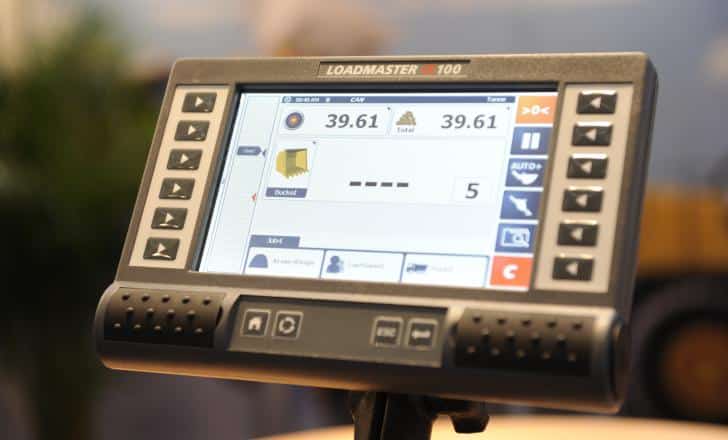Loadmaster Tools of the Trade: Technology in Air Cargo Management

Loadmaster Tools of the Trade: Technology in Air Cargo Management
The role of a loadmaster, a critical component of air cargo operations, is as complex as it is crucial. Ensuring the safe and efficient loading, distribution, and security of cargo in aircraft, loadmasters leverage sophisticated software and technologies to perform their duties effectively. This blog post delves into the advanced tools and methodologies modern loadmasters used to optimize air cargo management, focusing on enhancing aircraft performance and safety.
The Evolution of Loadmaster Responsibilities
Historically, the loadmaster’s job was highly manual, involving physical checks and paper-based systems for tracking cargo. However, as technology has advanced, so have the tools at their disposal. Today’s loadmasters operate in a tech-driven environment where accuracy, efficiency, and safety are paramount.
Key Technologies in Modern Air Cargo Management
- Load Planning Software
Load planning software is indispensable in a modern loadmaster’s toolkit. This software enables precise calculations regarding weight distribution, fuel requirements, and flight balance. By inputting data about the cargo, such as weight, size, and type, the software can suggest the optimal placement of goods within the aircraft to maintain balance and ensure structural integrity.
- Cargo Management Systems
Comprehensive cargo management systems track cargo from acceptance to delivery, providing real-time updates to loadmasters, airline operations, and customers. These systems are crucial for coordinating the various phases of cargo handling, from warehousing and ground handling to in-flight management and final delivery.
- Automated Loading Systems
In larger cargo operations, automated loading systems, which include mechanized conveyors and robotic loaders, assist loadmasters. These systems reduce the physical strain and potential for error in manually handling heavy freight items, improving loading efficiency and safety.
Integrating IoT for Enhanced Cargo Monitoring
Integrating the Internet of Things (IoT) in air cargo management has significantly improved how loadmasters monitor cargo conditions. IoT sensors placed within cargo or pallets transmit data regarding location, temperature, humidity, and other critical factors, enabling loadmasters to control cargo conditions throughout the journey.
Benefits of Advanced Loadmaster Tools
- Enhanced Safety: Advanced software helps ensure that cargo is evenly distributed and securely fastened, reducing the risk of in-flight shifts that could affect the aircraft’s stability.
- Increased Efficiency: With automation and real-time tracking, loadmasters can optimize loading and unloading processes, significantly reducing turnaround times.
- Improved Accuracy: Digital tools minimize the likelihood of human error in cargo documentation, ensuring that all regulatory and customer requirements are met precisely.
Challenges and Considerations
While the shift towards technology-driven cargo management offers numerous benefits, it also presents challenges. The high cost of advanced systems can be a barrier for smaller operators. Additionally, reliance on technology requires robust cybersecurity measures to protect sensitive cargo and flight operations data.
The Impact of Globalization on Loadmaster Operations
Globalization has dramatically increased the volume and complexity of air cargo traffic. Loadmasters are at the forefront of this change, facing the challenges of managing more diverse cargo types, tighter schedules, and stricter regulations. Their technology and tools have had to evolve rapidly to keep pace with these demands, ensuring that every aspect of cargo handling is streamlined and compliant with international standards.
Advanced Simulation Software
Developing advanced simulation software is one of the most significant technological advancements for loadmasters. This technology allows for virtual load planning and troubleshooting before the physical loading begins, identifying and mitigating potential issues beforehand. Simulation software can model different weight scenarios, balance problems, and even predict how cargo shifts can impact the aircraft during flight under various conditions. This preemptive approach is crucial in avoiding costly mistakes and delays.
Data Analytics for Optimized Operations
Modern loadmasters also benefit from data analytics, which offers deep insights into operational trends and efficiency. By analyzing historical data, loadmasters can identify patterns and potential improvements in their loading procedures, optimizing space utilization and fuel consumption. Data analytics also supports predictive maintenance for cargo equipment, suggesting repairs and upgrades before failures occur, thus minimizing downtime and extending the lifespan of loading equipment.
Training and Certification in New Technologies
As technology’s role grows, ongoing training and certification become essential for loadmasters. Many must now undergo specialized training in physical cargo handling, software management, cybersecurity, and technological troubleshooting. This training ensures that loadmasters are proficient in using new tools and can adapt to upgrades and changes in their systems.
Sustainability in Air Cargo Management
Finally, sustainability has become a key focus in air cargo management. Loadmasters are increasingly using technologies that improve efficiency and reduce the environmental impact of air cargo operations. For instance, better load planning reduces unnecessary fuel consumption, while electronic documentation reduces paper use. Future technologies will likely continue this trend, incorporating more eco-friendly practices and supporting the aviation industry’s goals to lower carbon emissions.
The modern loadmaster’s toolkit is broad and sophisticated in every respect, blending traditional skills with advanced technologies. As they continue to adapt and innovate, loadmasters ensure the smooth functioning of global air cargo operations and drive improvements that make air freight a pivotal component of international trade.
The Future of Loadmaster Technology
As technology evolves, the loadmaster’s role will likely become more technical. We can anticipate further AI and machine learning integration to predict optimal loading patterns and enhance decision-making processes. Additionally, augmented reality (AR) tools could provide loadmasters with real-time 3D visualizations of cargo arrangements, further simplifying their tasks.
Conclusion
In conclusion, the tools and technologies employed by loadmasters today are vital in managing the complexities of air cargo. As these technologies advance, they promise even greater efficiency, accuracy, and safety in air cargo operations, underscoring the essential role of loadmasters in the global logistics chain. These advancements redefine what is possible in air cargo management and highlight the evolution of aviation logistics in the face of technological progress.